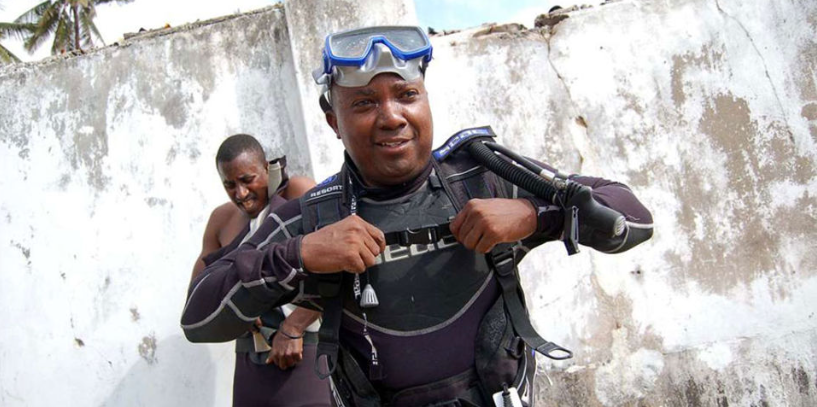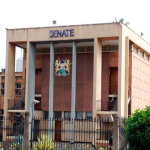Archaeological experts have described Kenya’s journey towards successful preservation of its cultural heritage as one of the standout features of cooperation between Nairobi and Beijing.
A few years ago, Kenya received significant funding from the Chinese government through the National Museums of Kenya (NMK). This project aimed to unearth the country’s underwater and archeological terrestrial resources.
China also committed to training Kenyan experts in this field, to help determine the exact amount and potential of underwater heritage.
Caesar Bita, a renowned underwater archaeologist who received training in China, applauds the East Asian country’s noteworthy role in aiding Kenya’s mission to preserve its rich but unexplored underwater resources. In 2007, when he was sponsored by the Chinese government to study at the Underwater Archaeology Centre in Beijing, Kenya did not have a single expert in the field.
Kenya has since become the first sub-Saharan African country to initiate an underwater archaeological expedition. This enterprise also aims to guard underwater heritage from fortune hunters.
“I was working with the National Museums of Kenya (NMK) as a land archaeologist at the Fort Jesus Museum. Having been involved inland archaeological research, NMK started looking into cultural heritage underwater and that’s how I got into underwater archaeology. I had worked as a land archaeologist for more than nine years. I enjoyed spending time with the Chinese underwater archaeologists and that’s what aroused my interest in the career,” he said
While in China, he underwent two phases of training. The first phase focused on basic swimming, diving, and theory, while the second phase involved underwater archaeological practice. This course primarily concentrated on the techniques and practice of underwater archaeology. The physical practice took place on an ancient shipwreck located in Langya in the South-East Sea of China.
“My experience on China and the Kenya – China cooperation began with the work of turning me into an underwater archaeologist. My training yielded a wealth of experience on China and the relations between the two countries,” he said at the conclusion of his studies in China.
“The Chinese warm welcome and dedication to ensure I mastered the art of underwater archaeology was a sign that China is a dedicated partner,” he added
The Kenyan archaeologist is deeply grateful for the resourcefulness of his lecturers, dive instructors, and trainee colleagues in Beijing. He credits them for enabling him to realize his potential in this innovative field.
Since returning home and settling into his new occupation, Kenya has experienced significant progress. It has long been suspected that Kenya’s numerous water bodies harbor unique, priceless, and mostly untapped heritage. This heritage includes treasured objects such as gold, silver, and other artifacts that are crucial to the country’s heritage.
“The Kenya-China cultural cooperation has exhibited great potential in our underwater cultural heritage. Through this friendship and cooperation, Kenya has identified a wealth of cultural heritage in the form of shipwrecks lying under the sea in our coastal waters. It is my prayer that this cooperation continues to enable Kenya to achieve its dream as the first African country to have an underwater archaeological museum,” he said
As an underwater archaeologist, Caesar revealed that he undertakes research on human interactions with the sea, lakes, and rivers through the study of remains of ships, maritime cultures, shoreside facilities, cargo, human remains, and submerged landscapes.
“Underwater is fascinating. It’s totally amazing to see and experience the different ecosystems and contexts and the old ships that capsized many years ago. Seeing them lying underwater surrounded by marine creatures is simply captivating,” he remarked
Cooperation between Kenya and China has resulted in joint undersea exploration activities along the Kenyan coast. Notably, researchers and experts from both countries have been involved in the search for a Chinese ship believed to have sunk in Lamu waters during the 15th century. Although the shipwreck has not been excavated, scattered artifacts suspected to be from its wreckage have been found.
“We find interesting artifacts underwater. In one of the projects in Kilwa, Tanzania, in 2015, we discovered interesting new shipwreck sites with stone anchors. Some of the other exciting projects I have taken part in are the Sino-Kenya underwater archeology in Malindi and Lamu between 2010 and 2014 and underwater impact assessment studies along Tudor Creek in Mombasa,” revealed Caesar
Caesar has participated in various archaeological tasks, including joint exploration activities with Chinese terrestrial and underwater archaeologists from Peking University and the Museum of China. Through these experiences, he has witnessed the willingness of the Chinese researchers to share and exchange their techniques and methodologies with their Kenyan counterparts.
He is proud to lead Kenya’s efforts to protect and preserve its rich historical materials hidden beneath the waters. After practicing for several years, Caesar is grateful for the opportunity to study in China, which he was nominated for.
“Chinese culture is quite diverse and their history stretches back several thousands of years compared to Kenya. Similarly, their research experience, technology is also far ahead of that of Kenya,” he said
He hopes that the country’s underwater heritage is preserved for the future and that these treasures can be considered as an economic resource.
Professor Mary Gikungu, the Director-General of the National Museums of Kenya, praised the support from China, stating that capacity-building efforts in cultural and heritage conservation are key to the strong ties between Kenya and China.
She mentioned that scholarship programs from Beijing have allowed 52 MSc and 12 PhD students to receive training at Chinese universities as part of collaborative projects between her institution and the Chinese Academy of Sciences.
“NMK research scientists have received support through academic exchange programs in Chinese academic institutions on areas of biodiversity conservation,” stated the DG, citing achievements in the successful joint research program in underwater archaeology
The People’s Republic of China has also assisted Kenya in procuring underwater archaeology equipment.
According to Caesar Bita, the China-Kenya cooperation demonstrates that the warmth and hospitality of the Kenyan people is not a recent development, but has existed for hundreds of years. He cites the 15th-century decision by the Sultan of Malindi to present a live giraffe as a gift to the King of Bengal as an example of this.
“Similarly, the reciprocity of Chinese people is as old as the Chinese themselves. After receiving a gift of a giraffe from the King of Malindi, the Chinese sent another expedition to Malindi. The ongoing friendship and cooperation exhibits these characters that began many years ago,” he said





